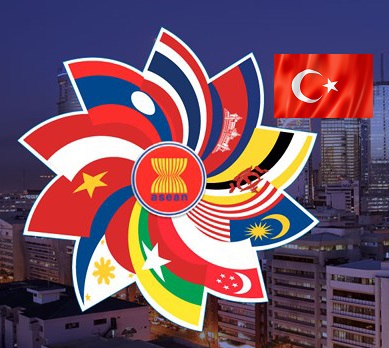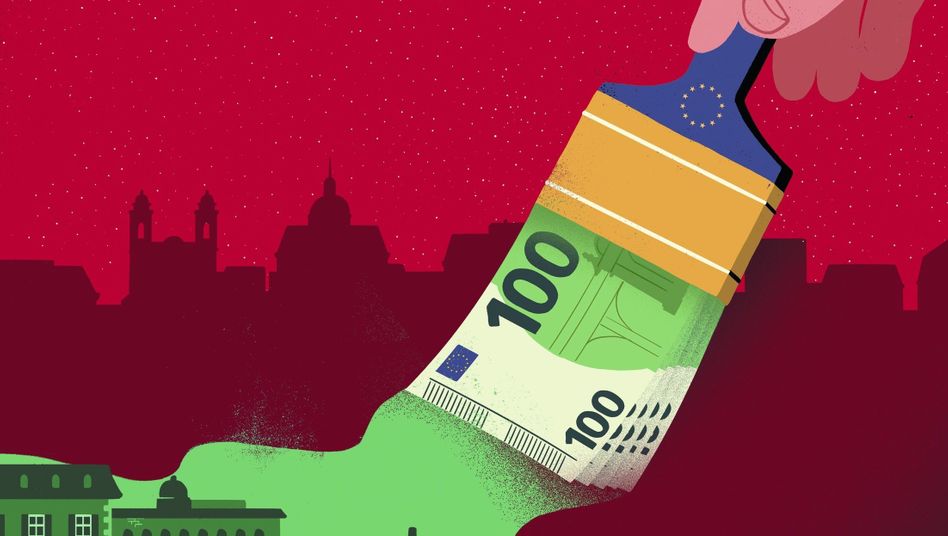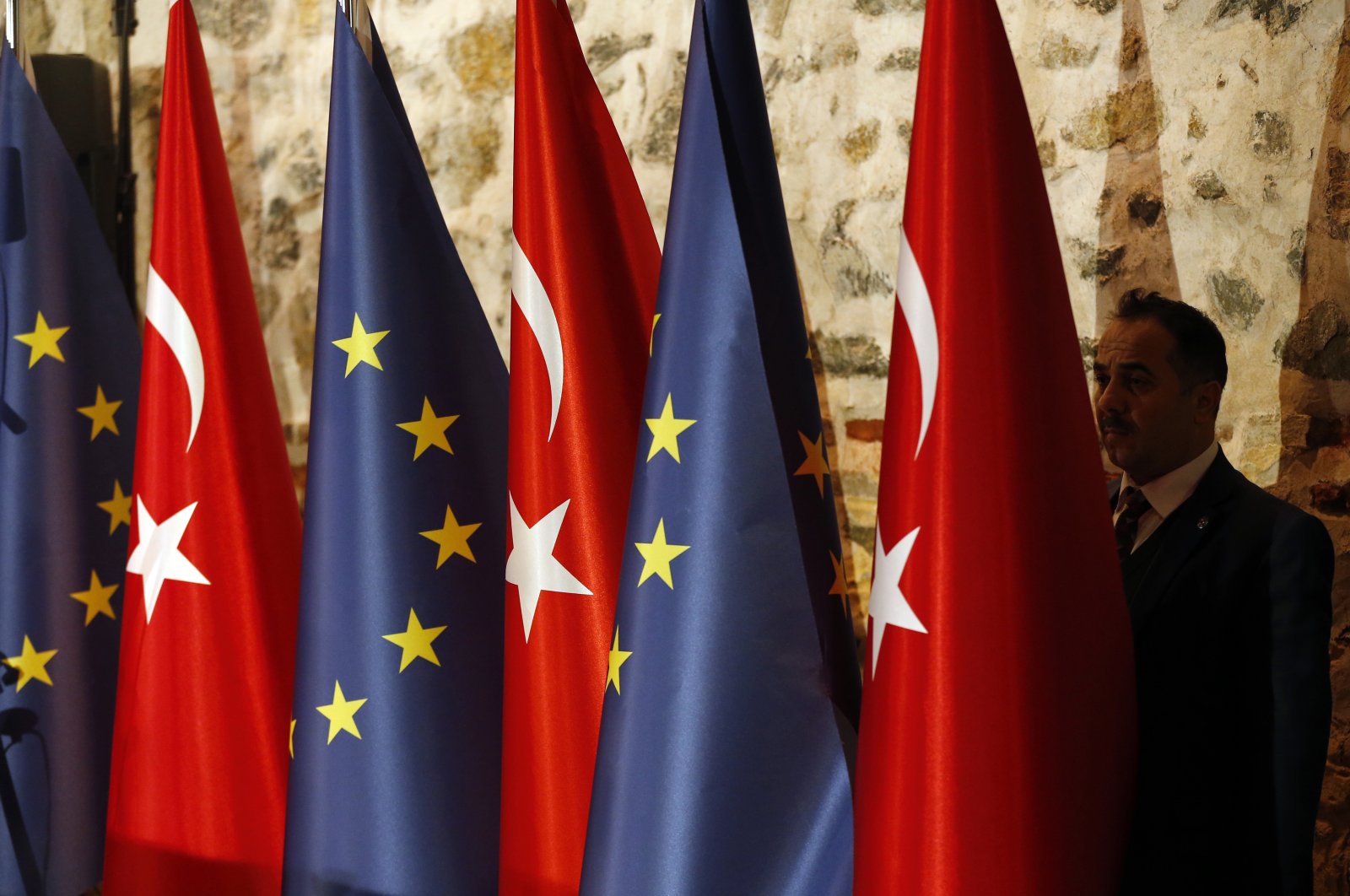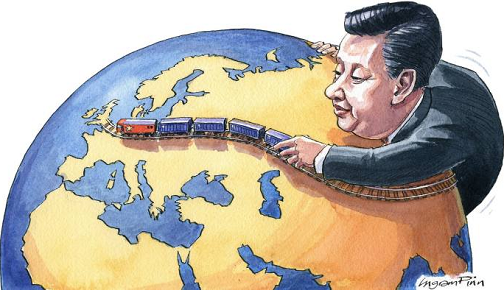
1. Introduction
Up until the December of last year (2019) when it was first diagnosed in Wuhan-China, none of us knew about the novel coronavirus except scientists. In a very short period of time, this virus has spread all over the world and detected in over 190 countries. It has filled hospitals with patients suffering from the illness and has taken the lives of thousands. It has turned the lives upside down and significantly weakened the economies of even the most powerful countries. The countries considered most powerful have started to compete for procuring personal protective equipment (PPE) against the virus. Some of these countries have even been accused of resorting to “modern-day piracy” to procure PPE. The panic caused by the spread of the virus has produced new forms of discrimination and stereotyping. People of East Asian descent have faced verbal harassment in various countries due to the virus first appearing in China. Workers and business people from Africa who had previously traveled to and from China and lived there without problems faced with rampant social ostracism there. Tourists from Western European countries that once colonized Africa have been begun to be treated in some Africa countries as “plague” spreaders[1]. It has also prompted a new wave of “globalization obituaries”[2]. We can extend the list of the novel coronavirus’ economic, political, and social effects with many more examples. In this analysis, we will examine the effects of coronavirus on globalization as well as its features that increasing xenophobic and racist assumptions.
1.1. What is COVID- 19?
The John Hopkins University Coronavirus Research Center is one of the most cited source for data about the Coronovirus pandemic. According to the John Hopkins Medicine, coronaviruses are a type of virus. There are many different kinds, and some cause disease. A newly identified coronavirus, SARS-CoV-2, has caused a worldwide pandemic of respiratory illness, called COVID-19. Coronaviruses are common in different animals. There are many different kinds of coronaviruses. Some of them can cause colds or other mild respiratory (nose, throat, lung) illnesses. Other coronaviruses can cause more serious diseases, including severe acute respiratory syndrome (SARS) and Middle East respiratory syndrome (MERS). Coronaviruses are named for their appearance: Under the microscope, the viruses look like they are covered with pointed structures that surround them like a corona, or crown[3].
1.2. How did the COVID-19 wreak havoc on the world population?
The "Spanish" influenza pandemic of 1918–1919 caused more than 50 million deaths worldwide[4]. The COVID-19 outbreak is considered the most serious global health crisis since the Spanish flu pandemic. As mentioned earlier, the outbreak started in China in December 2019 and has spread across the world since then. According to John Hopkins Coronovirus Research Center data, as of middle of July 2020, confirmed cases globally had reached more than 7, 7 million and around 430 thousand deaths had been registered. It is generally accepted that confirmed cases are likely to be only a fraction of all cases because of undetected asymptomatic cases. The consensus is that the reproduction rate (i.e. how many susceptible people each person with the pathogen infects) is between 2 and 3 in the absence of containment measures[5]. The World Health Organization (WHO) first declared COVID-19 a world health emergency in January 2020 and afterward as pandemic on 11 March 2020.
1.3. Negative effects of the COVID-19 on health, economy and social areas and countermeasures taken by governments
Negative effects of the COVID-19 and counter measures against it could be classified under three rubrics: a) public health, b) economic, and c) social. In terms of public health, most of the countries, step-by step, have closed their borders to arrivals from countries with infections; shut down their borders; halted international and domestic flights; instructed their population to self-quarantine; announced partial or full lockdown, and in some cases imposed curfews; closed schools; banned mass gatherings; brought domestic transportation restrictions and sometimes banned mass mobility. In this connection, responding to the calls of expats, many countries, took steps to evacuate their citizens living abroad. In this context, it should be underlined that Turkey is among the pioneer countries in this regard.
These measures, in most cases, led to a complete cessation of daily social life and economic activities. Thus, a steep economic decline came into being. In fact, according to latest OECD (The Organization for Economic Co-operation and Development) Economic Outlook of June 2020, “The global economy is now experiencing the deepest recession since the Great Depression in the 1930s, with GDP declines of more than 20% in many countries during shutdowns and a surge in unemployment.” OECD report presents two equally likely scenarios for each country and economy for the upcoming period. First scenario in which a second outbreak occurs (“double hit” scenario), global GDP is projected to decline by 7.6% in all economies towards the end of 2020, and remain well short of its pre-crisis level at the end of 2021. In the “single-hit” scenario, world GDP is projected to decline by 6% this year, but will have almost regained the pre-crisis level at the end of 2021. Even so, in many advanced economies, the equivalent of five years or more of per capita real income growth could be lost by 2021[6]. In the double-hit scenario, unemployment remains at high levels for even longer in the OECD economies after peaking at around 12½ per cent in the fourth quarter of 2020. The OECD-wide unemployment rate is projected to be close to 9% at the end of 2021[7].
In this connection, ILO (International Labour Organization) draws attention to an important point of severe consequences of COVID-19 for the young people. ILO states that “Young people are facing multiple shocks from the COVID‑19 crisis, which could lead to the emergence of a ‘lockdown generation’ “. The Labour Organization points out that young people are disproportionately affected by the COVID‑19 crisis, with multiple shocks including disruption to education and training, employment and income losses, and greater difficulties in finding a job. A total of 178 million young workers around the world, more than four in ten young people employed globally, were working in hard-hit sectors when the crisis began. The ILO calls for urgent and large-scale policy responses to prevent long-lasting damage to young people in terms of education/training and labor market prospects and stresses that “in the post-COVID-19 period, support should be channeled to sectors that are able to create decent and productive employment”[8].
In order to prevent negative impact of curbing daily life, stopping business activities on economy, most of the governments put into practice economic measures in a bid to limit the impact of the virus. Certain measures for easing tax and loan burdens of the businesses introduced along with the spending initiatives to stimulate the economy. Some central banks engaged in series of interventions in financial markets. Similarly, international organizations were started to work on options for providing loans and other financial assistance to countries in need[9].
In social area, steps were taken to reach the needy and strengthen social solidarity during the pandemic. For this purpose, the amount of funds provided to the social assistance and solidarity foundations. According to the UN Department of Economic and Social Affairs, “The COVID-19 outbreak affects all segments of the population and is particularly detrimental to members of those social groups in the most vulnerable situations, continues to affect populations, including people living in poverty situations, older persons, persons with disabilities, youth, and indigenous peoples”[10]. UN further expresses the view that the health and economic impacts of the virus are being borne disproportionately by poor people including homeless, refugees, migrants and displaced persons. In this connection, the United Nations Secretary-General, during the launch of a COVID-19 Global Humanitarian Response Plan on 23 March 2020 also said that “We must come to the aid of the ultra-vulnerable – millions upon millions of people who are least able to protect themselves. This is a matter of basic human solidarity. It is also crucial for combating the virus. This is the moment to step up for the vulnerable”[11]. Besides, the UN Department of Economic and Social Affairs underscores that COVID-19 pandemic may also increase inequality, exclusion, discrimination. The UN additionally draws attention to the point that refugees, migrants, or displaced persons stand to suffer disproportionately both from the pandemic and the increased xenophobia.
2. What is the impact of COVID-19 on globalization?
As mentioned earlier, the COVID-19 outbreak led to the publishing by some of "obituaries" for globalization as if the coronavirus had erected the tombstone of globalization. Less radical questions asking whether Covid-19 has killed globalization were also raised. The Economist is stating in this regard that “Wave goodbye to the greatest era of globalisation—and worry about what is going to take its place”[12]. In this connection, it would be useful to clarify first what we understand from globalization in the present context, since globalization is a contested concept that refers to sometimes contradictory social processes [13].
2.1. What is globalization?
In spite of the fact that there are strong differences of opinion on the real nature of globalization, we can attempt to classify the distinct features of the globalization processes under the three broad rubrics of political, economic and cultural. In terms of general definition, Anthony Giddens, in his book entitled “The Consequences of Modernity” defines globalization as “as the intensification of worldwide social relations which link distant localities in such a way that local happenings are shaped by events occurring many miles away and vice versa.” He characterizes this phenomenon as “dialectical process”, since such local happenings “may move in an obverse direction from the very distanciated relations that shape them.”[14]
In economic sense, globalization, in short hand, might be defined as “the phenomenon of increasing interconnection between the world’s economies as reflected in the flow of goods, capital, people and ideas.”[15] Richard Baldwin, in his book entitled “The Great Convergence: Information Technology and the New Globalization” explains the new age of globalization which is drastically different from the old[16]. According to Harvard University Press, he argues that in the 1800s, globalization leaped forward when steam power and international peace lowered the costs of moving goods across borders. This triggered a self-fueling cycle of industrial agglomeration and growth that propelled today’s rich nations to dominance. The new globalization is driven by information technology, which has radically reduced the cost of moving ideas across borders. This has made it practical for multinational firms to move labor-intensive work to developing nations. But to keep the whole manufacturing process in sync, the firms also shipped their marketing, managerial, and technical know-how abroad along with the offshored jobs. The new possibility of combining high tech with low wages propelled the rapid industrialization of a handful of developing nations, the simultaneous deindustrialization of developed nations, and a commodity supercycle that is only now petering out. He asserts that the result is contemporary Great Convergence [17]. Larry Summers, Harvard professor and former Secretary of the US Treasury, explains this supply chain succinctly as follows:
“… We used to think very much in terms of trade in goods—some country exports washing machines, some other country exports dryers. Increasingly, goods are produced with global supply chains. Part of a good is produced in one country, part of a good is produced in another country and assembly takes place in a third country. So trade is part of the production process, whether it takes place within a multi-national corporation or between companies. Trade is part of production through supply chains”[18].
2.2. COVID-19 has deeply disrupted the global supply chains
Responses to the COVID-19 pandemic have caused “the largest and fastest decline in international flows in modern history” and had a devastating effect on global supply chains. It is asserted that current forecasts indicate a 13-32% decline in merchandise trade, a 30-40% reduction in foreign direct investment, and a 44-80% drop in international airline passengers in 2020[19].
Director General of World Trade Organization, Roberto Azevêdo, in the press conference he held in April said in this regard the following:
“COVID-19 has upended the global economy, and with it, international trade … This pandemic is also however a major social and economic crisis. Millions of people around the world have already lost jobs and income. Our forecast reflects the enormous ongoing shocks to supply and demand. We project that trade in 2020 will fall steeply in every region of the world and across all sectors of the economy… In an optimistic scenario, our economists see the volume of global merchandise trade falling by 13% this year compared to 2019. If the pandemic is not brought under control, and governments fail to implement and coordinate effective policy responses, the decline could be 32% — or more … Nevertheless, these numbers are ugly — there is no way around that. Comparisons with the financial crisis of 2008 and even the Great Depression of the 1930s are inevitable”[20].
Current developments and data show that the supply chain, which forms the backbone of globalization in our age is undergoing a serious stress test. The drop in economic activity has had international repercussions as economies experienced delays in supplies of intermediate and finished goods through supply chains. Some of the intermediate and finished goods are of strategic character. We can give the F-35’s global supply chain as an example to this point. The US President Donald Trump, during an exchange where Fox Business Network’s Maria Bartiromo asked how the President plans to incentivize key U.S. industries to cut China out of their supply chain, replied in the following way:
“I could tell you hundreds of stories of the stupidity that I’ve seen. As an example, we’re making a fighter jet. It’s a certain fighter jet, I won’t tell you which, but it happens to be the F-35. It’s a great jet, and we make parts for this jet all over the world. We make them in Turkey, we make them here. We are going to make them there. All because President Obama and others — I’m not just blaming him — thought it was a wonderful thing. The problem is if we have a problem with a country, you can’t make the jet. We get parts from all over the place. It’s so crazy. We should make everything in the United States”[21].
In the light of foregoing, the following question arises regarding the post-Coronovirus period: Will countries and companies seek greater safety in international diversification, or will they try fostering domestic self-sufficiency?
3. COVID-19 and xeno-racism: Why are outbreaks often accompanied by racism and xenophobia?
As mentioned earlier, the panic caused by the spread of the virus has produced new forms of discrimination and stereotyping. People of East Asian descent have faced verbal harassment in various countries due to the virus first appearing in China. Workers and business people from Africa who had previously traveled to and from China and lived there without problems faced with rampant social ostracism there. Tourists from Western European countries that once colonized Africa have been begun to be treated in some Africa countries as “plague” spreaders.
As recent articles on the COVID-19 pandemic penned by the historians and medical sociologists suggests, “Outbreaks create fear, and fear is a key ingredient for racism and xenophobia to thrive. The coronavirus disease 2019 (COVID-19) pandemic has uncovered social and political fractures within communities, with racialized and discriminatory responses to fear, disproportionately affecting marginalized groups. Throughout history, infectious diseases have been associated with othering”[22].
Historical and Medical Sociologist Alexander White reminds us in this vein that “the history of the global management of pandemic disease threats, epidemics and global commerce have been inextricably related. Part of this history is the role of xenophobic responses to infectious disease threats. The xenophobia that has occurred in relation to the COVID-19 pandemic can be situated in a longer history that dates back to 19th-century epidemics and the first international conventions on controlling the spread of infectious diseases”[23]. He draws attention to the point that quarantine, cordon sanitaire, and other social distancing practices date back to 14th-century Europe and in 19th century the spread of epidemic diseases emerged as a problem that required an international, coordinated response. European colonial expansion brought smallpox and other diseases to the Americas and Africa from the time of Columbus to the 1800s. These epidemics wrought widespread devastation for Indigenous peoples. Simultaneously, Europeans encountered new diseases in the tropics. Colonization brought a particular encounter with diseases capable of harming Europeans. A new system was needed to better manage the spread of infectious disease. From 1851 to 1938, 14 conferences were held to standardize international regulations for the establishment of quarantine and the sanitary management of plague, cholera, and yellow fever. At this point we should add a historical note that “Eleven European States and Turkey were represented at the first of the International Sanitary Conference” in Paris and the third Conference was held in İstanbul in 1866[24]. It should be underlined that in the eyes of colonial health officials and the drafters of the first International Sanitary Conventions, the spread of cholera and plague was an economic, epidemic, and political risk to the long-term stability of the global economy.
Alexander White concludes his enlightening article entitled “Historical linkages: epidemic threat, economic risk, and xenophobia” with the following cautionary assessment:
“When we think about the framing of disease threats, we must recognize that the history of international infectious disease control has largely been shaped by a distinctly European perspective, prioritizing epidemic threats that arose from colonial (or now post-colonial) sites that threatened to spread disease and affect trade. COVID-19 is a serious and dangerous pandemic, but we must ask ourselves who our responses are designed to protect and who are they meant to vilify? In a pandemic, the best responses are those that protect all members of the population. A Eurocentric or US-centric view that excludes or stereotypes others will do much more harm than good. As the epicenter of the epidemic shifts for now to Europe and the USA and as global responses intensify, we should be prepared for more economic risk and confront racist or xenophobic responses for what they are—bigoted opinions with no basis in public health or facts.”
The similar cautionary advice was also pronounced by the Director-General of the World Health Organization (WHO) Tedros Adhanom during a press conference on March 2. According to Euronews, he said that “It’s so painful to see the level of stigma we’re observing … stigma, to be honest, is more dangerous than the virus itself. And let’s really underline that the stigma is the most dangerous enemy. For me, it’s more than the virus itself”[25].
In the light of foregoing, we can state that COVID-19 did not resurrect already existing "everyday racism" and xenophobia. It added a newly manufactured "stigmatization" type in accord with today's conditions to the racist and xenophobic discrimination. In the explanations up to this point, it may have been noticed that the concepts of racism and xenophobia were used side by side as if conjoint twins. In fact, racism and xenophobia are two distinct but interrelated and overlapping concepts.
4. What awaits us in the post-Corona era: A bleak future, or hope?
All economic indicators point to a likely outcome that economic growth can only be restored once the pandemic is clearly brought under control. It is yet to be clear how and exactly when the crisis be declared over. It should be accepted that probability of subsequent waves is real until a vaccine is found and used. In this vein, it seems to be a strong possibility that this issue will not be clarified up until the middle of 2021. This uncertainty calls for utmost prudence both in political and economic decision making. Time is not suitable for taking hasty risky decisions on such a slippery ground. It is necessary to move forward with caution.
It seems that supply chains policies will be top on agenda in the coming period, and domestic self-sufficiency policies will most likely powerfully challenge the international diversification. It should be expected that nationally and locally sensitive industries relating to health and national security, plus the industries employing a great number of domestic work force will be at the center of attention for promoting domestic self-sufficiency policies. However, such policies should not be expected to bring an end to economic globalization. Although there will be a decrease in support for economic globalization, it is unrealistic to expect a sudden collapse in sophisticated global supply chains. At the end, there will be a rational equilibrium between these two rival thoughts.
As far as the blueprints developed by various business and management consultancy groups are concerned, the most striking point is that nearly all of them approach to the problems caused by COVID on the basis of metric means. Since the final objective of these blueprints is to respond to the needs of the business world, this approach is expedient. Nevertheless, the depth of societal troubles caused by Corona-19 cannot always be identified by metric means. For example, providing unemployment figures of working groups as metrics is not enough to explain the desperation that employees face when they are unemployed. In this context, it is useful to take seriously into account the above-mentioned warnings of the ILO. Larry Summers is saying that “global integration won’t work if it means local disintegration. Unfortunately, that proved prescient. The essence of the solution has to be strengthening our systems of social insurance and preparation of people for a world that’s going to change more rapidly”[26].
All these suggest us that the globalization cannot come to an end with COVID-19. However, neglecting the "human factor" may cause more damage to globalization and economy than the measures taken against COVID-19. The world has recently witnessed how the death of George Floyd in the US upon police intervention caused huge worldwide violent protests.
It should not be forgotten that these protests came at a specific moment when a pandemic has caused millions of Americans to lose their jobs and much more than 100,000 to die of COVID-19. It should be also remembered that main demonstration theme of protests is racism and all types of discrimination, including racist one.
*Photo: https://www.medicalnewstoday.com/
[1] Teoman Ertuğrul Tulun, “Covid-19 And Corona Bonds Have Unmasked The Fragility Of The Eu,” Center For Eurasian Studies (AVİM), April 22, 2020, sec. Analyses, 2020 / 13, https://avim.org.tr/en/Analiz/COVID-19-AND-CORONA-BONDS-HAVE-UNMASKED-THE-FRAGILITY-OF-THE-EU.
[2] Steven A. Altman, “Will Covid-19 Have a Lasting Impact on Globalization?,” Harvard Business Review, May 20, 2020, https://hbr.org/2020/05/will-covid-19-have-a-lasting-impact-on-globalization.
[3] Lauren M. Sauer, “What Is Coronavirus?,” Johns Hopkins Medicine, June 17, 2020, sec. Health, https://www.hopkinsmedicine.org/health/conditions-and-diseases/coronavirus.
[4] Jeffery K. Taubenberger and David M. Morens, “1918 Influenza: The Mother Ofall Pandemics,” Emerging Infectious Diseases 12, no. 1 (2006): 15–22, https://doi.org/10.3201/eid1201.050979.
[5] Gabriel G. Katul et al., “Global Convergence of COVID-19 Basic Reproduction Number and Estimation from Early-Time SIR Dynamics,” MedRxiv, April 17, 2020, 19, https://doi.org/doi.org/10.1101/2020.04.10.20060954.
[6] “OECD Economic Outlook” (Organisation for Economic Co-operation and Development, June 10, 2020), 12, https://www.oecd-ilibrary.org/economics/oecd-economic-outlook/volume-2020/issue-1_0d1d1e2e-en.
[7] “OECD Economic Outlook,” 27.
[8] “ILO Monitor: COVID-19 and the World of Work. 4th Edition” (International labour Organization, May 27, 2020), 2.
[9] “Global Economic Effects of COVID-19” (Congressional Research Service, June 4, 2020), 1, https://crsreports.congress.gov/product/pdf/R/R46270.
[10] “Everyone Included: Social Impact of COVID-19,” United Nations: Department of Economic and Social Affairs Social Inclusion, 2020, sec. Covid 19, https://www.un.org/development/desa/dspd/everyone-included-covid-19.html.
[11] “Launch of Global Humanitarian Response Plan for COVID-19” (United Nations Secretary-General, March 25, 2020), https://www.un.org/sg/en/content/sg/press-encounter/2020-03-25/launch-of-global-humanitarian-response-plan-for-covid-19.
[12] “Has Covid-19 Killed Globalisation?,” The Economist, May 14, 2020, https://www.economist.com/leaders/2020/05/14/has-covid-19-killed-globalisation.
[13] Manfred B. Steger, Globalization: A Very Short Introduction, 4th ed. (Oxford: Oxford University Press, 2017), 1.
[14] Anthony Giddens, The Consequences of Modernity, 1st ed. (Stanford University Press, 1991), 64.
[15] Definition belongs to Lawrence H. Summers, President Emeritus of Harvard University and former US Treasury Secretary. Retrieved from https://fivebooks.com/best-books/larry-summers-globalization/
[16] Richard Baldwin, The Great Convergence: Information Technology and the New Globalization (Belknap Press, 2016), https://www.amazon.com/Great-Convergence-Information-Technology-Globalization/dp/067466048X.
[17] Richard Baldwin, “The Great Convergence Information Technology and the New Globalization,” Harvard University Press, accessed June 1, 2020, https://www.hup.harvard.edu/catalog.php?isbn=9780674660489; What Populism Gets Wrong About Globalization (Bloomberg, 2017), https://www.bloomberg.com/news/videos/2017-03-23/what-populism-gets-wrong-about-globalization-video.
[18] Eve Gerber, “The Best Books on Globalization Recommended by Larry Summers,” Five Books (blog), accessed May 1, 2020, https://fivebooks.com/best-books/larry-summers-globalization/.
[19] Altman, “Will Covid-19 Have a Lasting Impact on Globalization?”
[20] Roberto Azevedo, “Trade Forecast Press Conference: Remarks by DG Azevêdo” (April 8, 2020), https://www.wto.org/english/news_e/spra_e/spra303_e.htm.
[21] Valerie Insinna, “Trump Has Questions about the F-35′s Supply Chain. Here Are Some Answers,” Defense News, May 14, 2020, https://www.defensenews.com/air/2020/05/14/trump-has-questions-about-the-f-35s-supply-chain-here-are-some-answers/.
[22] “Racism and Discrimination in COVID-19 Responses,” The Lancet 395, no. 10231 (2020): 1194, https://doi.org/doi.org/10.1016/ S0140-6736(20)30792-3.
[23] Alexandre I R White, “The Art of Medicine: Historical Linkages: Epidemic Threat, Economic Risk, and Xenophobia,” The Lancet 395, no. 10232 (March 27, 2020): 1–2, https://doi.org/doi.org/10.1016/ S0140-6736(20)30737-6.
[24] Norman-Howard Jones, The Scientific Background of the International Sanitary Conferences 1851-1938, History Of International Public Health 1 (Geneva: World Health Organization, 1975), 12, https://apps.who.int/iris/bitstream/handle/10665/62873/14549_eng.pdf;jsessionid=4BB95E99044E3391F5A9373671F81907?sequence=1.
[25] Jasmin Bauomy, “COVID-19 and Xenophobia: Why Outbreaks Are Often Accompanied by Racism,” Euronews, March 6, 2020, sec. World, https://www.euronews.com/2020/03/05/covid-19-and-xenophobia-why-outbreaks-are-often-accompanied-by-racism.
[26] Gerber, “The Best Books on Globalization.”
© 2009-2025 Center for Eurasian Studies (AVİM) All Rights Reserved
No comments yet.
-
 PROSPECTS FOR EXPANDING TURKEY-ASEAN RELATIONS
PROSPECTS FOR EXPANDING TURKEY-ASEAN RELATIONS
Teoman Ertuğrul TULUN 10.08.2018 -
 COVID-19 AND CORONA BONDS HAVE UNMASKED THE FRAGILITY OF THE EU
COVID-19 AND CORONA BONDS HAVE UNMASKED THE FRAGILITY OF THE EU
Teoman Ertuğrul TULUN 22.04.2020 -
 CHANGING PERCEPTIONS: THE EUROPEAN UNION INSTITUTE AND TÜRKİYE'S ROLE IN EU SECURITY POLICY
CHANGING PERCEPTIONS: THE EUROPEAN UNION INSTITUTE AND TÜRKİYE'S ROLE IN EU SECURITY POLICY
Teoman Ertuğrul TULUN 26.06.2024 -
 CHINA’S INFLUENCE IN CENTRAL ASIAN TRADE
CHINA’S INFLUENCE IN CENTRAL ASIAN TRADE
Gülperi GÜNGÖR 08.06.2020 -
 NO PAROLE FOR THE ASSASSIN OF TURKISH DIPLOMAT
NO PAROLE FOR THE ASSASSIN OF TURKISH DIPLOMAT
Hazel ÇAĞAN ELBİR 02.06.2020
-
25.01.2016
THE ARMENIAN QUESTION - BASIC KNOWLEDGE AND DOCUMENTATION -
12.06.2024
THE TRUTH WILL OUT -
27.03.2023
RADİKAL ERMENİ UNSURLARCA GERÇEKLEŞTİRİLEN MEZALİMLER VE VANDALİZM -
17.03.2023
PATRIOTISM PERVERTED -
23.02.2023
MEN ARE LIKE THAT -
03.02.2023
BAKÜ-TİFLİS-CEYHAN BORU HATTININ YAŞANAN TARİHİ -
16.12.2022
INTERNATIONAL SCHOLARS ON THE EVENTS OF 1915 -
07.12.2022
FAKE PHOTOS AND THE ARMENIAN PROPAGANDA -
07.12.2022
ERMENİ PROPAGANDASI VE SAHTE RESİMLER -
01.01.2022
A Letter From Japan - Strategically Mum: The Silence of the Armenians -
01.01.2022
Japonya'dan Bir Mektup - Stratejik Suskunluk: Ermenilerin Sessizliği -
03.06.2020
Anastas Mikoyan: Confessions of an Armenian Bolshevik -
08.04.2020
Sovyet Sonrası Ukrayna’da Devlet, Toplum ve Siyaset - Değişen Dinamikler, Dönüşen Kimlikler -
12.06.2018
Ermeni Sorunuyla İlgili İngiliz Belgeleri (1912-1923) - British Documents on Armenian Question (1912-1923) -
02.12.2016
Turkish-Russian Academics: A Historical Study on the Caucasus -
01.07.2016
Gürcistan'daki Müslüman Topluluklar: Azınlık Hakları, Kimlik, Siyaset -
10.03.2016
Armenian Diaspora: Diaspora, State and the Imagination of the Republic of Armenia -
24.01.2016
ERMENİ SORUNU - TEMEL BİLGİ VE BELGELER (2. BASKI)
-
AVİM Conference Hall 24.01.2023
CONFERENCE TITLED “HUNGARY’S PERSPECTIVES ON THE TURKIC WORLD"









